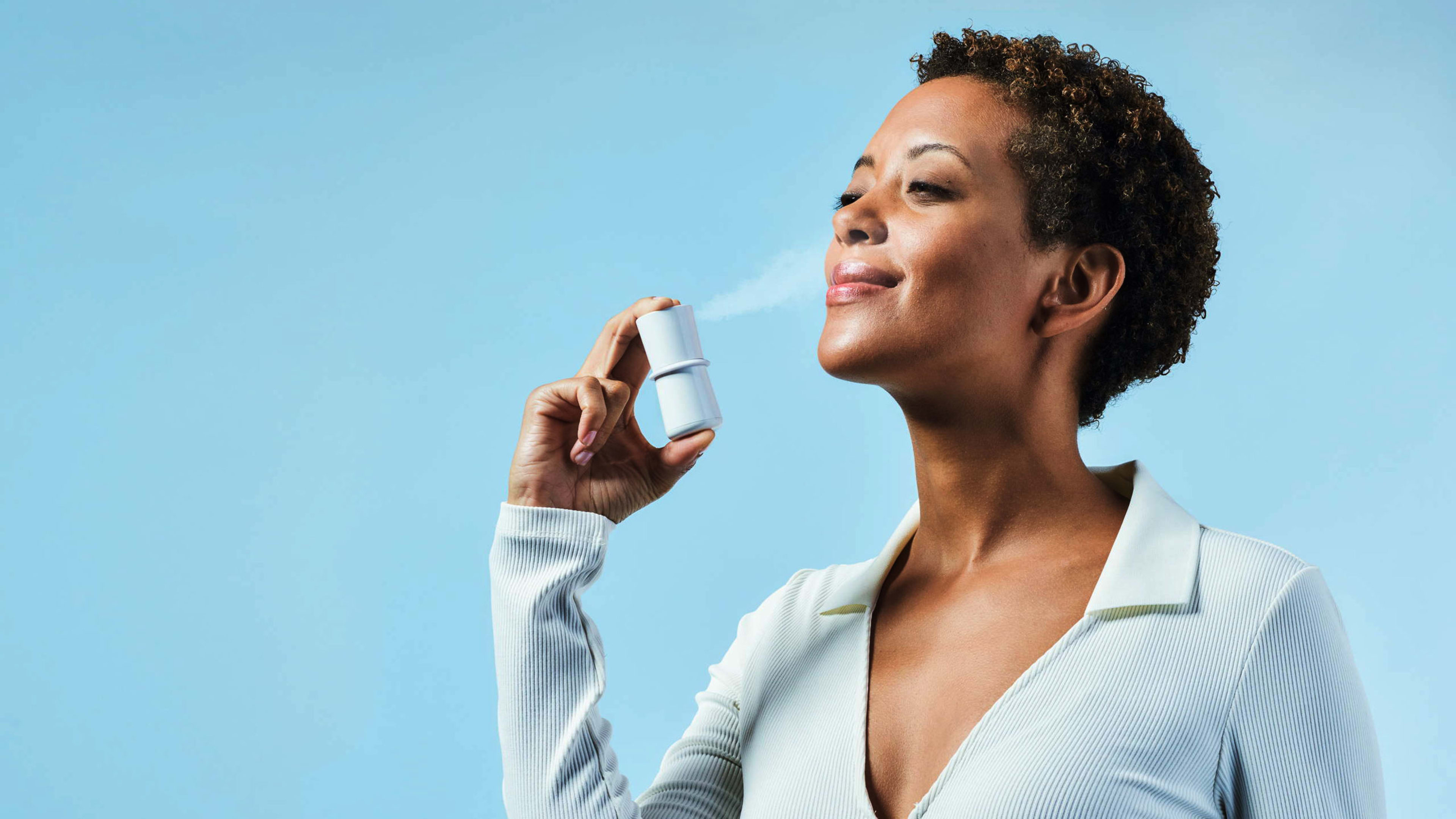With a squeeze of the device, a fine mist sprays in front of my nose. I inhale deeply, and feel the dry air of fall give way to a stream of moisture. It’s a pleasant sensation for anyone who has trouble breathing as temperatures get cold. As a bonus? A Harvard study demonstrates it may have a protective effect against airborne viruses like COVID-19—similar to wearing a cotton mask.
For the next four to five hours, I’ll breathe out 50% fewer respiratory droplets that could carry disease and make other people sick. Meanwhile, any bad droplets I breathe in should be less likely to make their way down to my lungs, where COVID-19 does its worst damage.
[Image: Sensory Cloud]This is the Fend. Launched by Harvard professor David Edwards in 2020 during the initial spread of COVID-19, it’s a contraption that holds a solution of salt water fortified with calcium—basically, a concoction similar to seawater. When you squeeze the device, the liquid expels the perfectly sized dro
plets to penetrate through your nose into your trachea. There, the solution hydrates the mucus lining of your airways, which is your body’s natural sticky trap to catch viruses before they go deeper into your lungs. The hydration stabilizes the mucus, making you less likely to exhale droplets, and less prone to breathe in droplets too.
Edwards has supported this science over multiple peer-reviewed papers published at Harvard, testing more than 700 subjects across the United States, Germany, and India. Fends were donated by Edwards’s company for some of the studies, but the research itself has been paid for by groups including the National Institutes of Health, German public funding, and the Premji Foundation. “I do think it’s valid,” says Robert Langer, a distinguished Institute Professor at the Massachusetts Institute of Technology and cofounder of Moderna, who has read Edwards’s research.
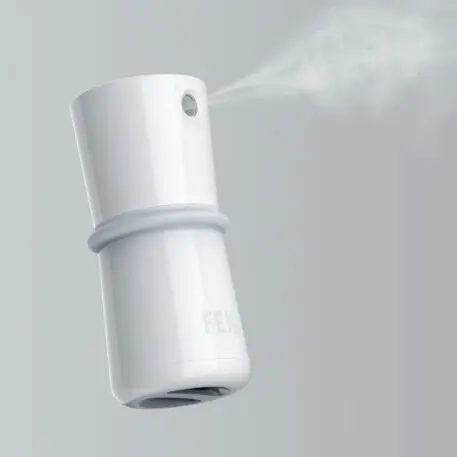
So in January of this year, Edwards connected with Ammunition, which saw this esoteric, quasi-medical device as a fascinating design problem. “From an Ammunition perspective, this is a freaking ideal project,” says founder Robert Brunner. “We have to figure out how to [build] it and create a new audience for it.”
Brunner rattles off the problems with the original Fend: “It’s too expensive, it’s fragile, it requires batteries, it’s heavy, it doesn’t travel well. To turn it off you have to take the batteries out.”
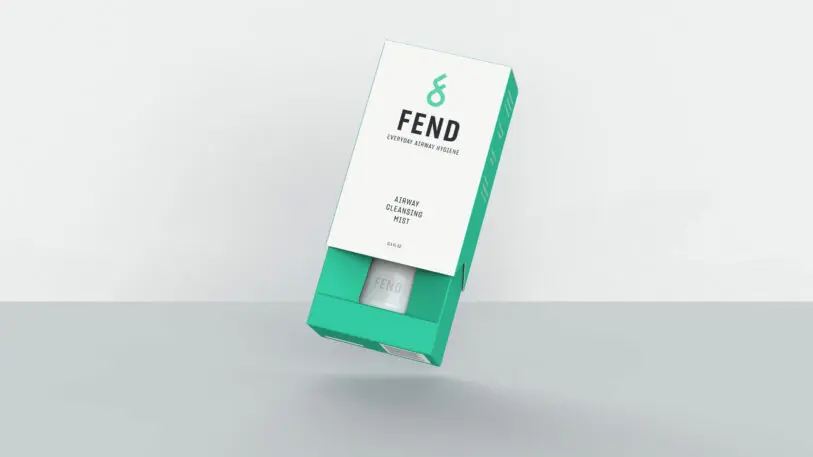
Brunner decided to invest in the company, tasking Ammunition to take charge of both the Fend product and its brand. Brunner’s design team mulled where to take the product next. Technically, they needed to build a mister. And that mister could look like almost anything you can imagine. They considered existing nasal sprays you can buy at the drugstore, but forms like those leaned too closely to a medical device instead of a consumer product.
“That [distinction was] important early on—that this doesn’t feel anything like an inhaler,” Brunner says. “So if I take it into public, I don’t feel self-conscious like I have an ailment.”
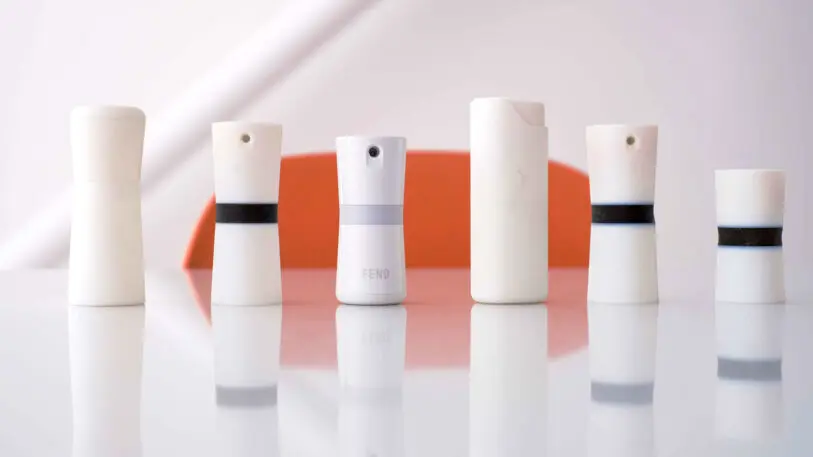
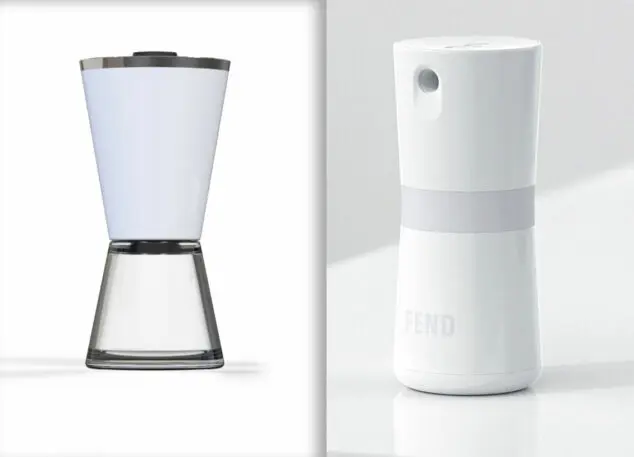

To explain and market the product, the team developed a communications strategy in which Edwards filmed videos explaining the usage and science behind the device in short, minute-long blips that could build up someone’s understanding over time. These videos will be texted to new users as part of a 21-day challenge to build a Fending habit—which comes with a money-back guarantee.
The Fend launches today for $13. It’s a disposable product (after 60 to 80 pumps, you are supposed to recycle it), meant to reach as many people as possible (though it is not meant to replace masking). Longer term, Edwards and Brunner tease that they are working on more Fend products that may have replaceable cartridges and other technologies that require more development time. “We need to take a step back and realize just how fast behaviors changed in the past two years as far as hygiene is concerned,” Edwards says. “But it’s still such a tough road.”
Recognize your brand’s excellence by applying to this year’s Brands That Matter Awards before the early-rate deadline, May 3.
